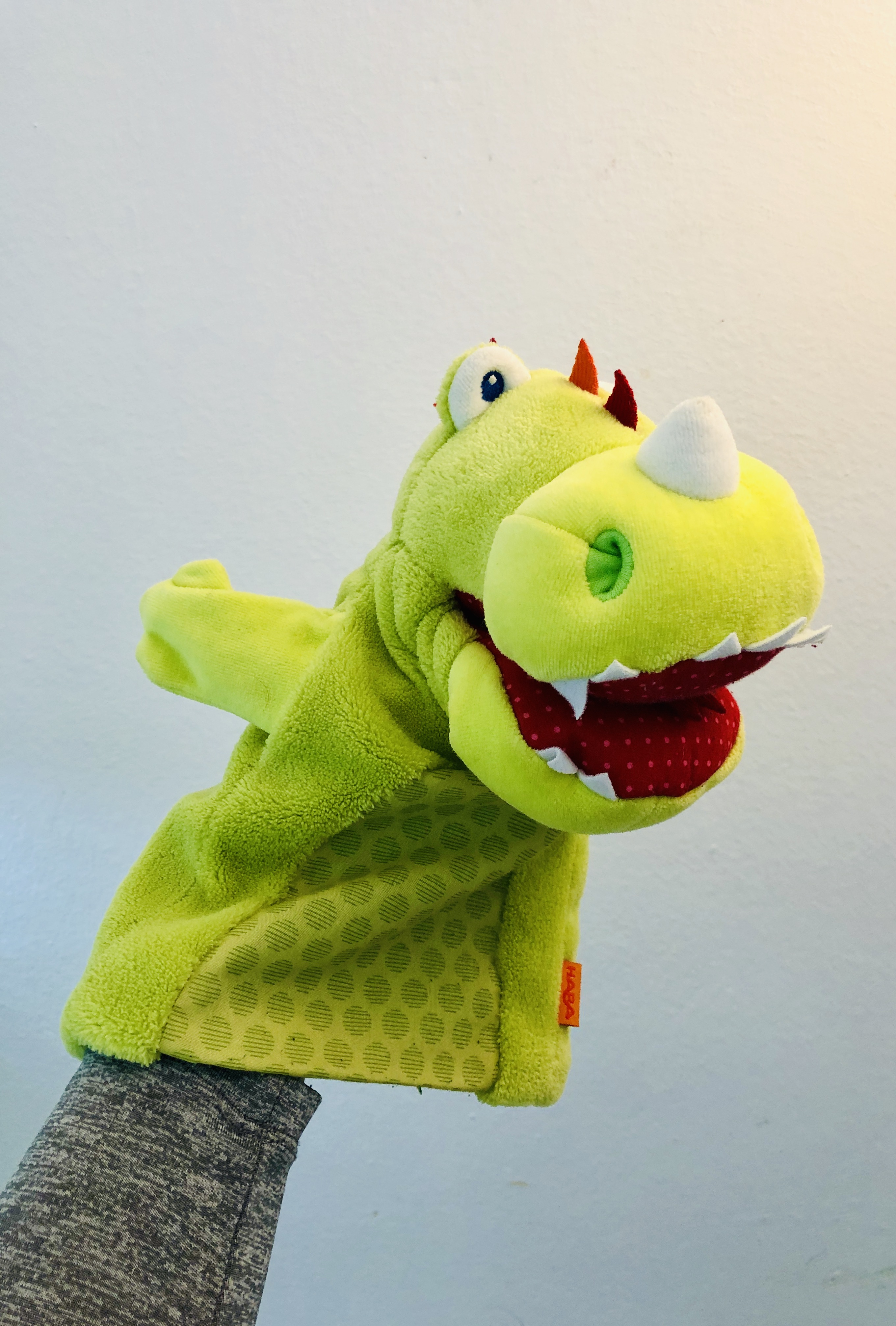How Can Puppets Foster Language Development?

There is so much going on in the area of development in the preschool age. Children are working on their language and numeracy skills, learning to cooperate with others, regulate their emotions, and accept limits and rules. Their little brains are like huge beehives.
Luckily, there is something that can help them navigate through this jungle of information and expectations - a puppet.
Putting puppets on children's hands provides learning opportunities in different developmental areas. This article focuses on the role of puppets in language development, especially in a foreign language.
In this article:
To better understand this role, let's look into why and how to use puppets. Answers to these questions and explanations that follow are based on research (1) and our experience as a multilingual family.
Why should we use puppets?
As most of us have experienced, lacking competence in a particular language often leads to feeling anxious and can be why children (and adults) avoid using it. Puppets can help with that.
For many children, speaking through a puppet opens up a new world of communication that supports the acquisition of language skills. They learn to converse and formulate their thoughts and words to best convey their message. In addition, playing with puppets helps children learn to construct sentences and find words to describe the elements in their storytelling.
We can say that puppets generate communication. One of the reasons is that children feel relaxed when they talk with or through their toys. And when a child can speak through a puppet, sharing isn't so scary, even in a foreign language.
Security and imagination
English is the third language of my kids. Sometimes, they are not so excited about using it. One of the reasons they told me was: "Because we don't know much English, and we can make a mistake." However, when playing with hand puppets, it's not the kids who make mistakes; it's the puppet. This creates a sense of security, making it easier for children to express their thoughts and feelings, experiment with languages, and make mistakes. The puppets ask for translations and explanations and repeat after the model; the child is not embarrassed to do that. After all, it's the puppet asking for help.
Puppets also have the potential to strengthen creativity because they force children to use their imagination. They get to make up roles, rules, situations, and different solutions. They play with languages, create new words and speak in different voices.
How can you use puppets?
Using storybooks as a springboard for puppet play ideas can be helpful.
- Read a story in the target language and act it out. This way, the kid gets to repeat and reproduce familiar expressions. Again, using what they know makes them feel more confident.
- Create new elements or a different ending to the story. This kind of dramatisation can help children internalise language patterns and produce something new.
- Puppets can be great reading buddies. Children can 'teach' their puppets to read in the target language.
- Get a new puppet that speaks only the target language. When I was in England, I brought home two dragons that could speak only English. Since then, my kids have associated every new hand puppet with that language. So, the other day, I bought two bath gloves - little turtles. Of course, my first thought was bathing. However, as soon as they put them on their hands, my kid said, "Oh, look! Turtles. Mummy, can they speak only English?"
Ok, next time I'll buy a bathing sponge.
- Model effective language in conversation. A parent speaking through a puppet should speak in complete sentences, use exciting vocabulary and speak in different voices. Be quiet, excited, and loud. Talk like a baby or an old lady. Kids love dramatisation.
- You can play with "persona" puppets or maybe monsters and animals. My kids' favourites are the dragon and turtle hand puppets.
- At the beginning of playing in a foreign language, the puppet (parent) can speak more and ask closed questions. Remember: children have to listen before they speak. As they build their vocabulary, you can slowly move on to open-ended questions to elicit their expression of thoughts and ideas.
How it works in our family
- questions. You can ask the puppet questions such as "What's your name?", "How old are you?". The puppet can then respond and ask the child the same question. This way, the child has a model and can easily repeat and answer the questions.
- stories. Our dragons usually sit on my knee when I'm reading a story to the boys. They help me emphasise key points in the story with exaggerated movements. And sometimes, they help turn pages or ask questions about the topic.
- reading. My children sometimes take their puppets and teach them letters. And sometimes, it is the puppet that reads the story. This way, the kids are less embarrassed to make mistakes.
- writing. Our puppets make birthday invitations or send postcards from the Moon.
This is theory. In practice, it isn't always so straightforward. For example, sometimes, my kids speak only English when they play with their puppets. But sometimes, because their dominant languages are German and Croatian, they try hard to teach their puppets to speak these languages.
Luckily for them, the puppets are quick learners; now, they all speak the languages the kids are more comfortable with.
Suggested reading on the topic:
Rounds, M. E. (2016). Pulling Strings: The Effects of Puppetry on the Language and Literacy Development of a Preschool Classroom. Honors College. 426.
Kröger, T., Nupponen, A. M. (2019). Puppet as a Pedagogical Tool: A Literature Review. IEJEE, 11(4), 393-401

